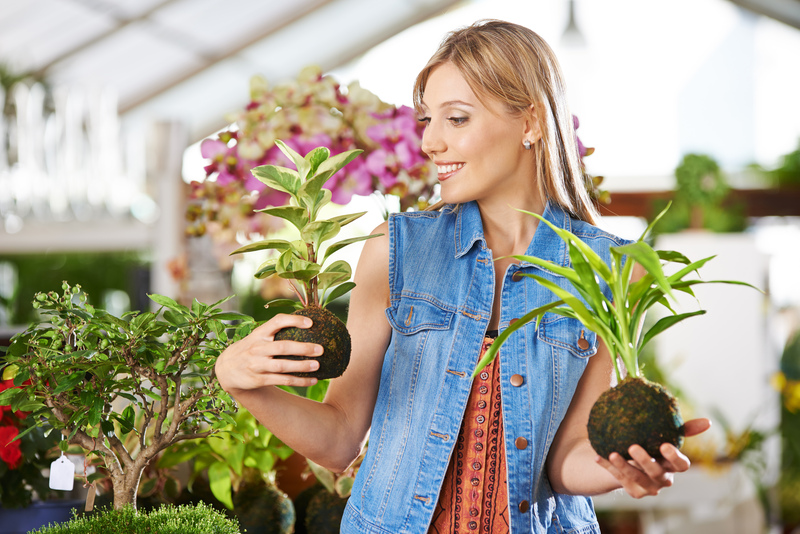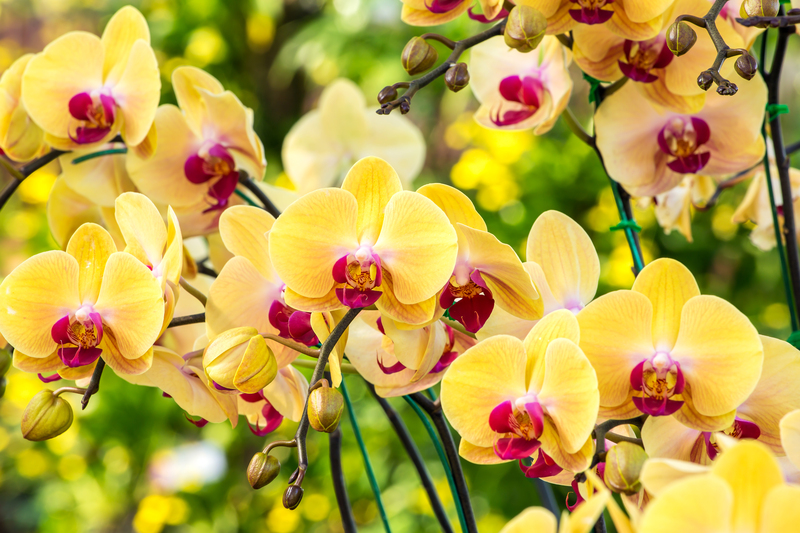Building a Garden That Nurtures Children's Growth and Play
Posted on 20/09/2025
Building a Garden That Nurtures Children's Growth and Play
A garden can be much more than a patch of green--it's a vibrant, living classroom and a joyful playground for children. Designing a garden that nurtures children's growth and play doesn't just enhance your outdoor space; it fosters curiosity, creativity, and lifelong connections to nature. In this comprehensive guide, discover actionable tips and exciting ideas for cultivating a child-friendly garden that thrives with learning, laughter, and adventure.
Why a Garden for Children?
Childhood is a crucial time for exploration and discovery. Outdoor gardens provide endless opportunities for:
- Physical activity--running, digging, and climbing
- Cognitive development--learning about plants, weather, and ecosystems
- Emotional growth--finding calm and joy in nature
- Creative play--imaginative games and artistic expression

Key Principles for Creating a Child-Centered Garden
Safety First
A nurturing play garden must also be a safe place. Consider:
- Fencing to keep children within boundaries
- Avoiding toxic plants like foxglove, oleander, or datura
- Choosing non-slip surfaces and rounded edges for structures
- Providing adequate shade and sun protection
- Supervised water features (e.g., fountains or birdbaths at child-safe heights and depths)
Inclusive Design
A garden to support children's growth must be accessible to all. Paths should be wide and smooth for strollers or wheelchairs. Raised beds can allow children of varying mobility to join in planting activities. Think about sensory accessibility, too, with textures, sounds, and scents that appeal to diverse abilities.
Encourage Exploration and Play
Children's gardens should feel like magical worlds waiting to be discovered. Design elements to encourage adventure include:
- Winding pathways and hidden nooks
- Secret entrances--like willow tunnels or arches
- Multisensory areas with fragrant herbs, colorful flowers, and rustling grasses
- Loose materials (logs, stones, sand) for building and tactile play
Designing a Garden That Grows With Your Child
Flexible Spaces for Changing Interests
As kids grow, their interests change. A truly nurturing children's garden will adapt to their evolving needs. Consider:
- Movable planters and play equipment
- Areas for both energetic play and quiet reflection
- Room for new projects like vegetable plots or art displays
Plant Selection: Nurturing Wonder and Curiosity
Select plants that are hardy, interactive, and engaging:
- Sunflowers--easy to grow, impressive height, and can double as play "walls"
- Sensory plants like lamb's ear (soft leaves), mint (fragrant), and snapdragons (fun to touch)
- Edible plants--strawberries, cherry tomatoes, peas--for tasting and harvesting
- Pollinator-friendly varieties to attract butterflies and bees--perfect for science observation
- Climbing plants (like beans) on teepees or trellises for living forts
Play Features to Inspire Active and Imaginative Fun
Natural Play Equipment
Integrate nature and play by adding:
- Balance logs and stepping stones for gross motor skills
- Sand pits framed by boulders or wood for digging and building
- Water play elements--such as a shallow stream or manual water pump
- Low "climbing" boulders or earth mounds for safe risk-taking
Creative and Quiet Zones
A sanctuary can foster art, music, and storytelling:
- Outdoor easels or chalkboard walls
- Story circles with stumps or cushions
- Music stations--wind chimes, xylophones made from tubes, and drums from pots
- Fairy gardens, gnome homes, or dinosaur jungles for imaginative play
Gardening Activities That Support Learning and Growth
Hands-on Gardening Projects
Nurture your child's sense of accomplishment and responsibility through:
- Planting seeds and seedlings and tracking their growth
- Setting up a vegetable patch for learning about food and nutrition
- Making compost and discovering the ecosystem of worms and insects
- Creating wildlife habitats, such as bug hotels or bird feeders
- Tending to pollinator gardens and observing bees, butterflies, and birds
Integrating Science and STEM
A child development garden is a living laboratory for science, math, and ecology:
- Chart weather and plant growth in a garden journal
- Measure rainfall, temperature, and sunlight with simple tools
- Explore the life cycle of frogs, butterflies, or ladybugs
- Experiment with soil PH, composting speed, and plant propagation
Social Spaces and Family Involvement
Gathering Places
Dedicate areas for group activities:
- Picnic tables or benches for snacks and crafts
- Open lawn space for games and yoga or relaxation
- Shade sails or pergolas for comfort in every season
Family Gardening Traditions
Make gardening a shared adventure:
- Start annual planting or harvest festivals
- Invite extended family or friends for garden parties
- Record memories in a shared scrapbook or time-lapse photos
Encouraging Responsibility and Stewardship
A child-focused play garden nurtures responsibility and environmental care:
- Give children age-appropriate gardening chores--watering, deadheading, or harvesting
- Talk about waste, recycling, and composting
- Host a "nature clean-up" day to take care of your corner of the earth
Seasonal Tips for Your Children's Garden
Spring & Summer
- Start seeds indoors so children can watch the germination process
- Plan splashy water games for hot days
- Harvest berries and teach children simple, garden-fresh recipes
Autumn & Winter
- Plant bulbs for a surprise sprout in the spring
- Create habitats for insects and birds over winter
- Collect leaves and pine cones for crafts and nature art
- Hang feeders and watch winter wildlife
Maintenance That Invites Participation
Children learn best by doing. Involve them in every stage:
- Watering plants and checking moisture levels
- Weeding (with safe, child-sized tools)
- Harvesting vegetables, fruits, and herbs
- Cleaning and putting away gardening tools

Adapting for Urban and Small Spaces
Not everyone has a backyard, but you can create a nurturing garden for children on a balcony or rooftop:
- Vertical planters and wall gardens maximize space
- Container gardening with herbs, strawberries, or tomatoes
- Mini sandboxes or water tables on balconies
- Bring nature indoors with terrariums, microgreens, or window boxes
Conclusion: Growing More Than Plants
Building a garden that nurtures children's growth and play is an investment in their future--sparking curiosity, resilience, empathy, and a love for the natural world. By including diverse plants, playful features, and hands-on activities, you create far more than a garden. You cultivate a living classroom, a joyful playground, and a cherished family tradition.
Ready to build your own children's play garden? Let your child's imagination guide the journey, and prepare for a lifetime of adventure, learning, and growth--right outside your door.

